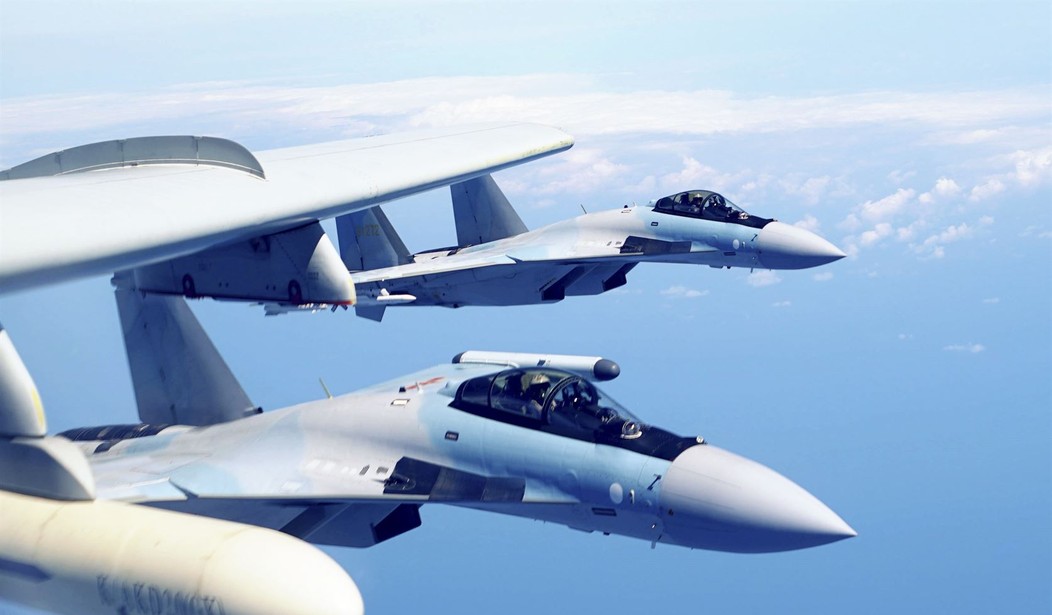China has been upgrading its conventional military forces for more than a decade, anticipating some kind of showdown with the United States over Taiwan or Hong Kong. They have begun a crash naval construction program, building their own aircraft carrier and vastly increasing the number of their surface craft.
They have also radically improved their air force and augmented their army with a new generation of tanks and other equipment.
But it’s in the nuclear arena that China’s buildup is most worrisome. China will double its number of ICBMs over the next decade after engaging in a program to massively expand its nuclear arsenal.
“We are witnessing a strategic breakout by China,” Adm. Richard told a missile defense conference in Alabama. “The explosive growth in their nuclear and conventional forces can only be what I described as breathtaking,” he said, adding that “frankly, that word ‘breathtaking’ may not be enough.”
Adm. Richard said the two new missile fields recently disclosed in published reports will include silos for more than 100 nuclear land-based intercontinental ballistic missiles. He suggested that additional missile bases are under construction.
“Commercial satellite imagery has discovered what is assessed as two nuclear missile fields in western China,” he said. “Each has nearly 120 ICBM silos.”
Little is known of the new Chinese ICBM, the DF-41. It’s believed the missile can carry up to 10 warheads that could be independently targeted during re-entry. The U.S. is constrained by START limits to three warheads per missile.
Satellite photos posted by the Air University center reveal the early stages of construction at the third missile base.
Together, the three new missile bases will house 350 to 400 new long-range nuclear missiles, U.S. officials said. If 10 warheads are deployed on the DF-41s, China‘s warhead level will increase to more than 4,000 warheads on its DF-41s alone.
By contrast, the United States has an estimated 3,800 warheads, with 1,357 deployed for use and the rest in storage.
The Biden administration’s response to this buildup is typical. The White House is delaying upgrades to our own strategic forces after radical Sens. Jeff Merkley (D-Oregon) and Elizabeth Warren (D-Mass.) demanded a bureaucratic review of the ground-based leg of our nuclear triad.
Related: Why China’s Communists Would Prefer Biden
“This policy reversal contradicts the advice of your own experts and duplicates research already conducted by the Air Force, all while weakening our national security posture,” Senate Energy Committee member Steve Daines (D-Mont.) said in a letter to the White House. “I urge you to rescind this misguided directive… This latest development at the behest of far-left special interest groups is nothing more than a thinly-veiled attempt to scuttle the ground-based leg of the nuclear triad on ideological grounds.”
Related: Hunter Biden’s ‘Art’ Dealer Has Ties to China. Because Of Course He Does.
The number of ICBMs is not a good measurement of nuclear power. Accuracy is highly prized compared to numbers and the U.S. takes a backseat to no other nation when it comes to delivering a warhead on target.
Also, our submarine-based nuclear deterrent is far more effective than anything China can throw at us. In short, China can build as many ground-based missiles as they wish and won’t threaten U.S. supremacy in nuclear weapons.
But as it was during the Cold War, perception is important. The perception that the U.S. doesn’t want to compete with China is dangerous to our overall deterrence. Expect the Biden administration to move our nuclear upgrades along before too long, regardless of what the radicals want.










